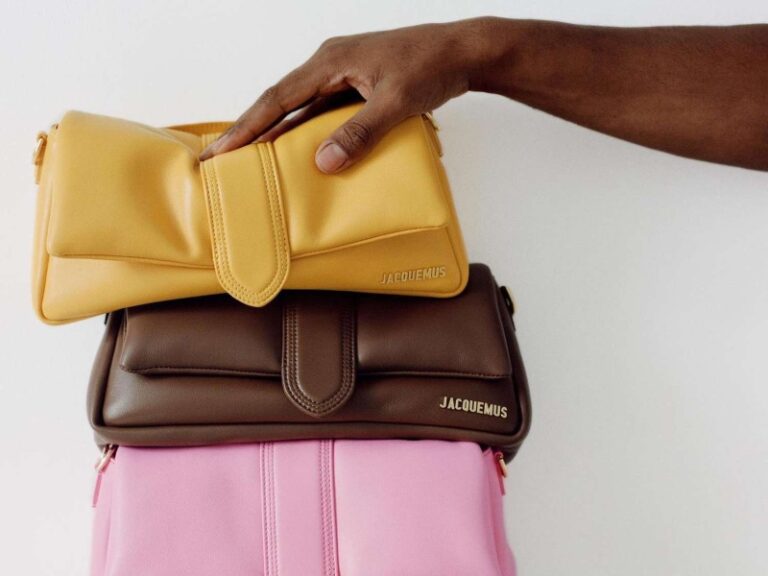
Have an Authenticity Checklist Get Tactile (and Use Common Sense) Look for Consistent Style Examine the Typography Learn Common Red Flags
The internet is a double-edged sword: Access to designer goods is just a click away, but quality and authenticity can be a gamble. Most of us wind up shopping for some of our style purchases online, but it’s hard to know the real thing from the dupe—not to mention that dream purse you’ve lusted after may not be anywhere near your location. Before dropping your hard-earned cash on a designer bag you aren’t sure about, it’s best to know what to look for to make sure it’s actually an authentic, luxury bag. Ahead, an authentication specialist at Fashionphile shares her seven top tips on how to spot a fake handbag, so you can make sure you know exactly what you’re buying.
Why Should You Avoid Fake Handbags?
When you spot a designer bag you love at a much lower price than normal, it may feel too good to be true—and that’s because it usually is. Fake handbags, also known as counterfeits, are far too common both online and in real life, and while they may look like an appealing deal, it’s best to steer clear. In addition to disrespect for the original designer’s work, fake handbags often have a lower-quality construction, so it might not look like it does in the picture and/or could fall apart quickly. You also don’t really know if harmful chemicals were used in the production process, putting both yourself and the bag’s maker at risk.
There are also moral reasons not to purchase a counterfeit bag: Not only was it created against the law, but you may unwittingly contribute to criminal enterprises that engage in forced labor and human trafficking. Even in the luxury space, labor conditions in factories are never ideal, but it’s even worse when it’s an unregulated manufacturer. Nearly 28% of fake products seized by the government are handbags and wallets, and according to U.S. Customs and Border Protection, over 90% of all counterfeits come through international mail and express environments, most of which are funneled through small, e-commerce businesses. Bottom line: know before you buy, always opt for the real thing, and do your due diligence ahead of time.
How to Spot a Fake Handbag
Pay Extra Attention With Trending Bags
It’s simple supply and demand, but exclusive, highly coveted brands and styles are most likely to be duplicated. “The most highly counterfeited bags are the classic styles from brands such as Hermès, Chanel, and Louis Vuitton, largely due to the limited ability to find them at their boutiques or being resold online or at highly elevated prices,” says Fashionphile senior manager of authentication Laura Chavez-Sainz. The pervasive reach of social media also plays a big role in this since if it’s trending with the masses, it’s most likely getting replicated at a far-off factory somewhere: “Anytime we see a trendy style on social media, we know we will most likely see many fakes from it.”
Choose Your Retailer Wisely
Reputation is everything. That Instagram ad from an unknown “luxury” brand that keeps popping up on your feed? Do some research, read company reviews, and check sites like the Better Business Bureau before inputting your credit card info on a deal that seems too good to be true. According to Chavez-Sainz, make sure the company has an “authenticity guarantee” for peace of mind: “Ensure you are buying from a place that does authentication in-house and that they stand behind their process,” she says. “Also, research on your own and compare the bag you’re shopping for to other identical bags. There are a couple of reputable authentication services you can use.”
Have an Authenticity Checklist
There are several factors to keep in mind when going over a bag’s authenticity, including inspecting the material quality, logo, and serial numbers. Regardless of the brand, Chavez-Sainz recommends focusing on the following details to make sure they fit the exact designer description of the bag:
- Hardware (zippers, engravings, hardware finishes)
- Logo & “made in” stamp
- Typography
- Date code or designer ID (Is it a factory code, date code, batch code or serial number? Ensure the font style and date code or designer ID correspond to the appropriate collection year.)
- Materials used on exterior and interior (leather, fabrics, lining blend)
- Overall construction, such as stitching and resin glaze
- Bag accessories and packaging
Get Tactile (and Use Common Sense)
Purchasing a bag in person is always preferable when possible, since you can verify your checklist right at the counter. “Use your senses! Touch the bag,” Chavez-Sainz says. “Does the leather look and feel and smell like leather? Do research before shopping in person: Learn if it should have a date code or designer ID, and if so, learn how to read it, as well as studying the typography and format of the logo. Check the quality of the construction and materials used, especially the hardware—hardware is a big telltale for me.”
Look for Consistent Style
Styles change over the years, as well as product specs. But we’re all little internet sleuths by now, so compare photos and description details like you’re doing a background check on your best friend’s new Tinder date. Consistency is key: “Look at the style [of the bag] and compare it with others to ensure consistency,” Chavez-Sainz advises. “Try to look for the date code or designer’s unique ID, either through photos or the description, and confirm it is correct for the year and style of the bag.”
Examine the Typography
Typography is often one of the best giveaways to spotting a fake handbag, but what is it, exactly? It’s the font that you’re reading right now, the unique style of your favorite film title, or the lettering found in any ad, logo, or brand. Essentially, it’s the appearance of any written word, and luxury brands all use unique typography.
“[Check out] the logo's typography, including the ‘made in’ stamp,” Chavez-Sainz advises. “Is it in all caps or lowercase? What is the shape and font of the letters (i.e. serif or no serifs, is it closely spaced or enlarged, etc.). Paying attention to these little details will help you ensure you are buying an authentic bag.”
Learn Common Red Flags
Especially when it comes to ultra-exclusive brands, it’s best to keep up to date on key red flags. “Each brand's construction transitions over time, [so it] helps to be on the lookout for warning flags,” Chavez-Sainz tells us. “One fun fact about Celine handbags is that you should never see the number ‘5’ on the nose of their zipper sliders; however, for other brands, it [can be] okay. For Dior handbags that have screws, you should never see a Phillips head screw. For Fendi, look out for grammatical errors on the sewn-in RFID tags.”
The Final Takeaway
If you’re still on the fence about whether the splurge of a designer bag is worth it, it’s always better to opt for a local, artisan-designed bag (sans luxury label) or a thrift shop gem than go for a fake. “I would rather not buy counterfeit products simply because I don’t know what’s behind the labor conditions,” Chavez-Sainz says. “Ultimately, these products are made with the cheapest quality components and won’t last long compared to an authentic bag.” Remember: there’s no need to impress the rest of the world with a label. You’re one of a kind, so make sure you’re getting a quality, statement piece that will hold its value for years to come.
Article Sources Byrdie takes every opportunity to use high-quality sources, including peer-reviewed studies, to support the facts within our articles. Read our editorial guidelines to learn more about how we keep our content accurate, reliable and trustworthy.
-
The truth behind counterfeits | U.S. Customs and Border Protection. https://www.cbp.gov/trade/fakegoodsrealdangers#:~:text=in%20your%20browser.-,Legal%20Implications,forced%20labor%20or%20human%20trafficking.

